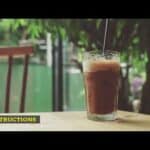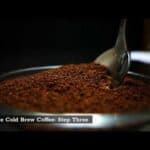If you do not consider what coffee is being used in the machine before selecting which coffee machine you want, fighting over which makes the best cup is useless. You must choose the right coffee roast for the brewing method you will ultimately use in order to make the right decision.
A coffee roast has a great effect on the taste, aroma, body, and ultimately the taste of an espresso, for example.
Coffee drinkers need a guide to coffee roasts to understand how the beans go from soft and spongy on a branch to what ends up in their cups. The method you choose for brewing will be affected by your understanding of the basics of coffee roasting.
Is There Any Meaning Behind A Name?
Roasts were previously identified by a geographic area associated with them, such as Italian, French, City or New England. In many cases, a geographic area was associated with a very specific brewing style, and the coffee roasts lent their names to the brewing method used in that place. Suppose, for instance, that an “Italian roast” was developed to make espresso – the popular Italian brewing method.
As our coffee cultures have combined, however, the terminology associated with coffee roasts has become skewed. Additionally, marketers are using language to lure consumers with seductive adjectives and language, making it increasingly difficult to know what kind of coffee roast is in the bag.
How to Choose the Right Beans for A Perfect Espresso
Now that you have done your research, you have found the perfect machine. The next step is to learn how to make the perfect espresso. To achieve the perfect espresso, three factors need to be considered: the bean, the roast, and the brew.
In order to clarify, there is no such thing as an espresso bean. The term espresso refers to the brewing process. Coffee beans are the only thing there is.
Roasting is what makes coffee beans unique. Roasting coffee beans can range from light to dark. Espresso is best made with beans that have been roasted in the medium to medium-dark range.
Consider the Origin of the Coffee Bean
For any chef, starting with high-quality ingredients will always result in a superior dish. Similarly, chefs are interested in where their food and coffee originate. Country, climate, and altitude all play an important role in the final product and taste of the bean.
You should also know there are two different types of beans: arabica and robusta. Each contributes to the taste of coffee. The Robusta plant grows in lower elevations, mainly because of its caffeine content and rough flavor. The high density of oils in Robusta also contributes to the crema in espressos.
On the other hand, Arabica species grow at higher altitudes. The world’s Arabica production is much higher than that of Robusta, but only 1 or 2 percent of it is of the superior quality that provides the flavors and aromas that espresso drinkers expect.
The characteristics that beans from different parts of the world contribute to a coffee, along with the contributions of both Robusta and Arabica, are what make espresso both rich and complex. We also have compiled a guide that will help you choose the best coffee beans for espresso.
Although single origin roasts are great for certain brewing methods, richness is achieved when you blend bean varieties. Because of this, espresso roasts are blends, or miscela as the Italians call them.
Consider How the Coffee Bean Is Roasted
Did you know that coffee beans start out green? A fresh coffee bean has an earthy scent and is green and moist. As a result of roasting, they become dark and nutty.
The roasting process turns coffee beans into those crunchy little beans whose aroma gets us out of bed in the morning. The first step in determining which flavor profile you like is to learn how coffee roasts affect the final taste of your cup.
If you are interested in learning more about coffee roasts, this guide is a great place to start.
Light Roasts
You can tell a lot about the roast level of beans from their color. Darker roasts are heated for a longer period of time than lighter roasts. All roasts end up appearing the palest shade of brown.
Roasted coffee beans reach their final form at 350°F to 400°F. This is known as “first crack”, when the moisture being extracted from beans is indicated by its first cracks. Usually, light roasts aren’t cooked very long after they start to crack. The beans will be the driest, and little to no oil will be visible on the surface. Their flavor is earthier. Roasting removes caffeine, so light roasts have the strongest caffeine punch.
The lighter roasted beans are also the most acidic. Coffee acidity refers neither to PH balance nor to what is perceived as “sour” taste like lemon. Acidity is rather how close the bean is to its natural green or fruity state. The more roasted a bean is, the further away it is from it’s “natural” state, therefore it loses it’s acidity.
Even though any roast can be used in any brewing method, a light roast will yield a disappointing espresso. A light roast will produce an expresso that is bland and lacks the richness and velvety finish associated with espresso.
Medium Roasts
“Medium roast” beans are heated to 410°F – 430°F. The medium roasts are heated until they reach the “second crack” after the first cracking series. Generally, they are a bit darker brown. The flavor and color of the coffee will be more intense than lighter roasts.
There won’t be any oil visible on the surface of the beans, but the flavor will be slightly less acidic than lighter roasts. They will taste more balanced and contain slightly less caffeine than their lighter counterparts. It’s a good idea to experiment with medium roast coffee in pursuit of your perfect espresso.
Medium-Dark Roasts
In roasted beans that have been roasted for a little longer with some oil visible on the surface, the color will be rich and dark. The roasting temperature is about 25°F higher than medium roasts. From the beginning of the second crack to the middle of the second crack, these beans are roasted.
Aromas from the beans will be extremely indicative of the flavor of the roast if you roast medium-dark roasts. The flavors of coffee can range from bittersweet to spicy, chocolatey or caramel depending on the origin and age of the beans. The body of medium-dark roasts will develop. Body refers to the physical properties of the beverage and is associated with feelings of fulness, roundness, richness, and density. Espresso is best made with medium or medium dark roasts, according to Italian baristas.
Dark Roasts
The exterior of dark roasted beans is shiny and oily. The color will be dark to almost black. They are roasted at the highest temperature, more than 100°F higher than light roasts. Roasted until the end of the second crack or longer.
These flavors can be smokier, fuller, almost burnt. If you’re a real coffee enthusiast, you should only use dark roasted blends with french presses and more traditional coffee brewing methods. Most people find the flavor too intense.
How Coffee Roasts Affect Your Espresso Machine
Your choice of roast can not only affect the taste of your coffee, but also your machine. Overroasted beans are oily and leave a greasy residue on all your machine components, including the bean hopper and brew unit. Eventually, this oily residue will become gummy and sticky, which can cause damage. You should clean your espresso maker if you have been using overly roasted, oily, or really dark roasts. Consider also whether the roast you are using is really too dark.
There’s nothing like tasting a coffee roast yourself to explain what it’s supposed to taste like. Whatever level of coffee drinker you are, it’s important to know what kind of beans you’re getting.
When you order a cup of coffee, you should know what to expect. Many high-end coffee shops now ask whether you want their light roast or dark roast. The first step towards developing your personal coffee tastes is understanding how coffee roasts work.
After learning about coffee roasts, you can explore various brewing techniques. The trick is to find the roast that suits your brewing method. You will experience the magic and satisfaction of a delicious cup of coffee or espresso when you find the perfect match.
Was this helpful?
Hi there! I’m a food enthusiast and journalist, and I have a real passion for food that goes beyond the kitchen. I love my dream job and I’m lucky enough to be able to share my knowledge with readers of several large media outlets. My specialty is writing engaging food-related content, and I take pride in being able to connect with my audience. I’m known for my creativity in the kitchen, and I’m confident that I can be the perfect guide for anyone looking to take their culinary journey to the next level.









